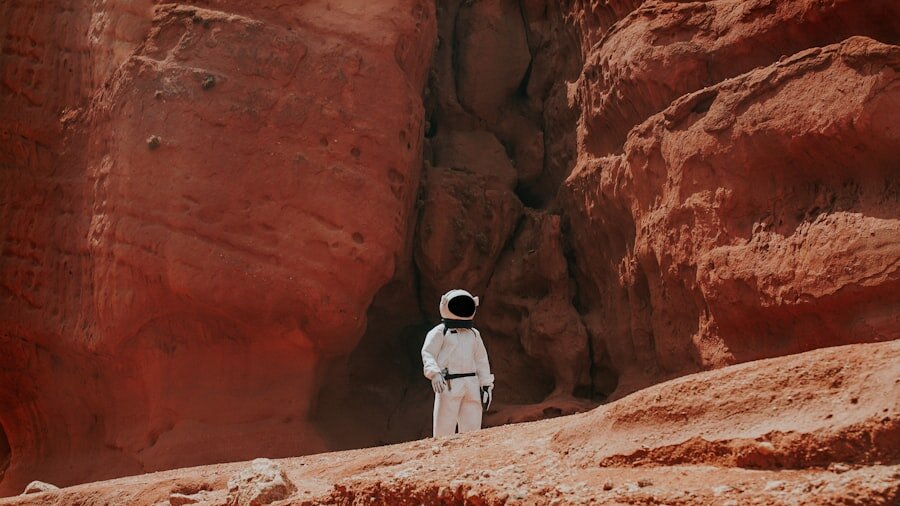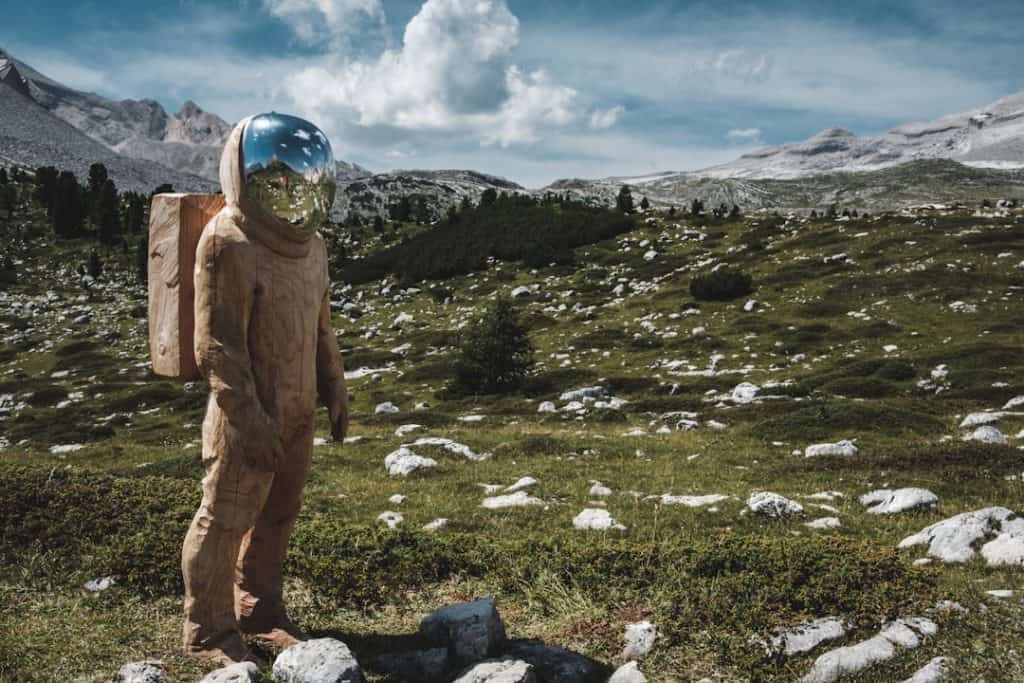The journey to becoming an astronaut begins long before the first launch into space. It is a rigorous and demanding process that requires not only exceptional academic credentials but also physical endurance and psychological resilience. Candidates typically possess advanced degrees in fields such as engineering, physical science, biological science, or mathematics.
However, academic prowess alone is insufficient; aspiring astronauts must also demonstrate significant professional experience, often accumulating thousands of hours of flight time or conducting groundbreaking research in their respective fields. This multifaceted selection process ensures that only the most qualified individuals are chosen to embark on this extraordinary adventure. Once selected, candidates undergo an extensive training regimen that can last several years.
This training encompasses a wide array of disciplines, including survival training, robotics, and spacecraft systems. Astronauts must learn to operate complex machinery and understand the intricate systems that keep them alive in the harsh environment of space. They engage in simulations that replicate the conditions of space travel, including weightlessness and the psychological stresses of isolation.
Furthermore, they participate in physical fitness programs designed to prepare their bodies for the rigors of launch and re-entry. The training is not merely a test of physical capability; it also assesses mental fortitude, teamwork, and problem-solving skills under pressure, all of which are crucial for success in the unforgiving realm of outer space.
Key Takeaways
- Training to become an astronaut requires rigorous physical and mental preparation, including simulations of space missions and survival training.
- Space travel is a unique and awe-inspiring experience, but it also comes with challenges such as adapting to zero gravity and dealing with isolation.
- Adapting to life in space involves learning to eat, sleep, and exercise in zero gravity, as well as managing the psychological effects of long-term isolation.
- Conducting experiments and research in space provides valuable insights into various scientific fields, including biology, physics, and astronomy.
- Observing Earth from space offers astronauts a unique perspective on the planet’s beauty and fragility, inspiring a deeper appreciation for environmental conservation.
Launching into the Unknown: The Experience of Space Travel
The moment of launch is a culmination of years of preparation and anticipation. As the countdown reaches zero, astronauts experience a surge of adrenaline as the rocket engines ignite, propelling them into the vastness of space. The sensation of liftoff is unlike any other; the immense force of acceleration pushes them back into their seats as they break free from Earth’s gravitational pull.
The roar of the engines and the vibrations of the rocket create an atmosphere charged with excitement and trepidation. For many astronauts, this moment is a dream realized, a testament to their dedication and perseverance. As the spacecraft ascends through the atmosphere, astronauts witness a breathtaking transformation.
The blue sky fades into darkness, and the curvature of the Earth becomes visible against the backdrop of the cosmos. This transition from the familiar to the unknown is both exhilarating and humbling. The experience of space travel is not just a physical journey; it is a profound psychological shift that alters one’s perception of existence.
The realization that they are now part of a select group who have ventured beyond Earth’s confines instills a sense of responsibility to contribute to humanity’s understanding of the universe.
Living in Zero Gravity: Adapting to Life in Space

Once in orbit, astronauts must quickly adapt to life in a microgravity environment. The absence of gravity fundamentally changes how they move, eat, and even sleep. Simple tasks become complex challenges; floating objects can easily drift away if not secured, and eating requires special packaging to prevent crumbs from floating around the spacecraft.
Astronauts learn to navigate their surroundings with grace, using handrails and footholds to stabilize themselves as they float through the modules of their spacecraft or space station. Daily routines are meticulously planned to maintain both physical health and mental well-being. Exercise becomes a critical component of life in space; astronauts spend approximately two hours each day on specialized equipment designed to counteract muscle atrophy and bone density loss caused by prolonged exposure to microgravity.
Additionally, maintaining a balanced diet is essential for sustaining energy levels and overall health during missions that can last several months. The psychological aspect of living in such an isolated environment cannot be overlooked either; astronauts engage in regular communication with family and friends on Earth to combat feelings of loneliness and maintain their mental health.
Exploring the Final Frontier: Conducting Experiments and Research
| Experiment | Research Topic | Findings |
|---|---|---|
| Mars Rover Mission | Exploration of Martian surface | Discovery of evidence of past water activity |
| Microgravity Study | Effects of space on human body | Increased understanding of bone density loss in space |
| Exoplanet Observation | Search for habitable planets | Identification of potential Earth-like exoplanets |
Space missions are not solely about exploration; they are also opportunities for scientific discovery. Astronauts conduct a variety of experiments that take advantage of the unique conditions found in space. Research in microgravity allows scientists to study phenomena that cannot be replicated on Earth, leading to breakthroughs in fields such as materials science, biology, and medicine.
For instance, experiments on protein crystallization have revealed insights into diseases like cancer and Alzheimer’s, potentially paving the way for new treatments. The International Space Station (ISS) serves as a laboratory where astronauts collaborate with scientists from around the globe. They conduct experiments ranging from growing plants in space to studying the effects of microgravity on human physiology.
Each experiment is meticulously planned and executed, with astronauts documenting their findings for analysis upon their return to Earth. This collaborative approach not only enhances scientific knowledge but also fosters international cooperation in space exploration, demonstrating that humanity can work together for a common goal beyond national boundaries.
The View from Above: Observing Earth from Space
One of the most profound experiences for astronauts is witnessing Earth from space. The view is nothing short of breathtaking; the planet appears as a vibrant blue marble adorned with swirling clouds and landmasses. This perspective offers a unique appreciation for Earth’s beauty and fragility, often prompting astronauts to reflect on their place within the universe.
Many describe this experience as transformative, leading them to advocate for environmental stewardship upon their return. Photographs taken from space have become iconic representations of our planet’s beauty and vulnerability. Astronauts often share these images with the public, raising awareness about climate change and the need for sustainable practices.
The sight of natural disasters from above—hurricanes swirling over oceans or wildfires consuming vast landscapes—serves as a stark reminder of humanity’s impact on the environment. This connection between space exploration and environmental advocacy underscores the importance of viewing Earth not just as a home but as a shared responsibility for all its inhabitants.
Facing the Unknown: Dealing with Challenges and Dangers in Space

Space travel is fraught with challenges and dangers that require astronauts to be prepared for any eventuality. The harsh environment of space presents numerous risks, including exposure to radiation, equipment malfunctions, and psychological stressors associated with isolation and confinement. Astronauts undergo extensive training to handle emergencies, learning how to respond effectively to situations such as cabin depressurization or fire onboard.
One notable incident that highlights these dangers occurred during the Apollo 13 mission in 1970 when an oxygen tank exploded en route to the Moon. The crew faced life-threatening conditions as they worked tirelessly with mission control to devise solutions for their safe return to Earth. This incident exemplifies not only the inherent risks of space travel but also the importance of teamwork, quick thinking, and resourcefulness in overcoming adversity.
Astronauts must remain calm under pressure, relying on their training and each other to navigate unforeseen challenges.
Returning to Earth: The Transition from Space to Home
The journey back to Earth is as complex as the launch itself. As astronauts re-enter the atmosphere, they experience intense heat generated by friction against air molecules at high speeds. The spacecraft must be equipped with heat shields designed to withstand these extreme temperatures while ensuring the safety of its occupants.
The descent is marked by turbulence and deceleration forces that can be disorienting after months spent in microgravity. Upon landing, astronauts face another adjustment period as they reacclimate to Earth’s gravity. Their bodies have adapted to life in space, leading to temporary challenges such as muscle weakness and balance issues.
Rehabilitation programs are essential for helping them regain strength and coordination after returning home. Additionally, readjusting to everyday life can be emotionally taxing; many astronauts report feelings of disconnection from family and friends after their transformative experiences in space.
The Legacy of Space Exploration: Inspiring the Next Generation of Astronauts
The legacy of space exploration extends far beyond individual missions; it serves as an inspiration for future generations. The stories of astronauts who have ventured into space captivate young minds, igniting dreams of exploration and discovery. Educational programs aimed at promoting STEM (science, technology, engineering, and mathematics) fields often draw upon these narratives to encourage students to pursue careers in science and engineering.
Organizations like NASA actively engage with schools and communities to foster interest in space exploration through outreach programs, workshops, and interactive experiences. By sharing their experiences and knowledge, astronauts become role models who demonstrate that with dedication and hard work, anyone can aspire to reach for the stars. This ongoing legacy not only fuels curiosity about our universe but also emphasizes humanity’s collective quest for knowledge—a journey that continues to unfold as we push the boundaries of what is possible in space exploration.


